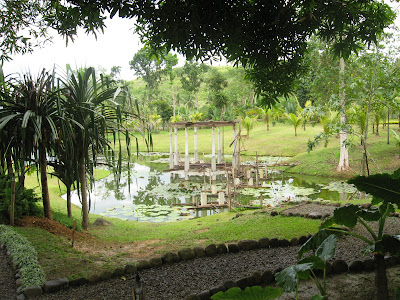The St. Peter Metropolitan Cathedral (also referred to as the San Pedro Cathedral or Davao Cathedral), dedicated to Saint Peter, is the ecclesiastical seat of the Roman Catholic Archdiocese of Davao. It is located in front of the Sangguniang Panglungsod (City Council) ng Dabaw Building.
First built using nipa and bamboo in 1847 by Don Jose Oyanguren, it was later demolished subsequently rebuilt in wood in the Neo-Gothic style in the mid 1900s by the late Architect Ramon Basa. During World War II, it was said to have been turned into a horse stable by Japanese troops. In 1964, due to its small size, it was finally remodelled in concrete, glass and metal by Architect Manuel Chiew.
Being of recent origin, it doesn’t have the weathered look of heritage churches. Still, it has a turbulent history as the cathedral has been a witness to two grenade bombing incidents.
The first incident, on April 19, 1981 (Easter Sunday), killed 17 people and injured 157. Again, on December 28, 1993 (Holy Innocents Day), another bombing resulted in 6 deaths and 151 injured (32 seriously).
From the outside, the distinctive modern façade is a departure from the usual façade of Catholic churches, with Islamic elements incorporated into its design. Its curved, gray roof looks like a bow of a vinta (a traditional boat made by the Badjao tribe in Southern Mindanao) sailing over waters with a Christian cross in the middle as the rudder.
The arched windows, flanking the cathedral’s main doorway, hint at traditional Gothic design. The old altar, designed by Ramon Basa, with antique images of different saints, is preserved at the cathedral’s right wing.
The separate imposing bell tower, standing by a corner in the courtyard, has a replica of the the Pieta (a statue of the sorrowful Blessed Virgin Mary with the dead body of her son, Jesus Christ, on her lap), adorning a pocket garden, and the two concrete tablets of the Ten Commandments of God.
St. Peter Metropolitan Cathedral: San Pedro St., Barangay Poblacion District, Davao City, Davao del Sur. Tel: (082) 227-2317, 227-2398 and 226-4740.











































.jpg)












